-
 Bitcoin
Bitcoin $105,447.7499
-0.45% -
 Ethereum
Ethereum $2,531.3089
-1.75% -
 Tether USDt
Tether USDt $1.0003
0.00% -
 XRP
XRP $2.1437
-0.25% -
 BNB
BNB $644.9789
-1.51% -
 Solana
Solana $144.6826
-2.39% -
 USDC
USDC $0.9998
0.00% -
 Dogecoin
Dogecoin $0.1780
-0.90% -
 TRON
TRON $0.2712
0.26% -
 Cardano
Cardano $0.6246
-2.45% -
 Hyperliquid
Hyperliquid $40.2367
-4.28% -
 Sui
Sui $2.9356
-4.16% -
 Chainlink
Chainlink $13.1672
-1.88% -
 Bitcoin Cash
Bitcoin Cash $431.5623
-4.78% -
 UNUS SED LEO
UNUS SED LEO $9.1005
1.39% -
 Avalanche
Avalanche $18.9820
-1.84% -
 Stellar
Stellar $0.2564
-1.68% -
 Toncoin
Toncoin $2.9534
-2.18% -
 Shiba Inu
Shiba Inu $0.0...01206
-0.09% -
 Hedera
Hedera $0.1552
-2.07% -
 Litecoin
Litecoin $85.1717
-1.48% -
 Polkadot
Polkadot $3.7877
-1.29% -
 Ethena USDe
Ethena USDe $1.0004
0.00% -
 Monero
Monero $312.5617
-2.74% -
 Dai
Dai $1.0000
0.00% -
 Bitget Token
Bitget Token $4.5295
-0.22% -
 Pepe
Pepe $0.0...01096
-1.92% -
 Uniswap
Uniswap $7.3160
-4.97% -
 Pi
Pi $0.6091
3.63% -
 Aave
Aave $277.6389
-3.99%
The Role of K-line Chart Analysis in Cryptocurrency Investment: How to Identify Buying and Selling Times
K-line charts are vital for crypto trading, showing price trends and key patterns like hammers and engulfing signals to help identify entry and exit points.
Jun 12, 2025 at 11:43 pm
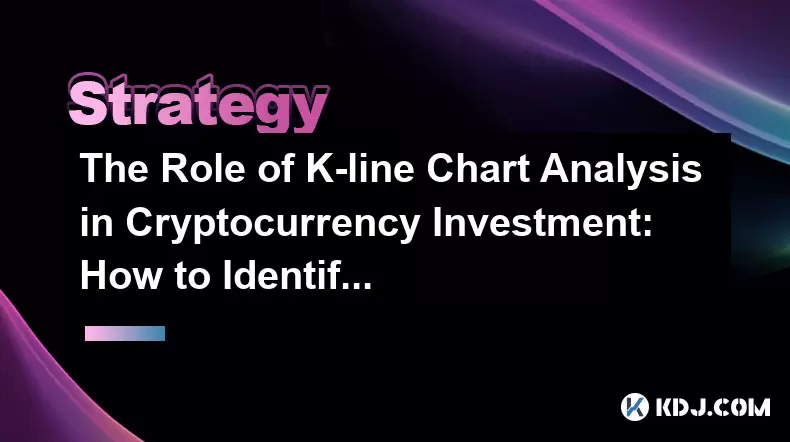
Understanding the Basics of K-line Charts in Cryptocurrency Trading
K-line charts, also known as candlestick charts, are essential tools used by cryptocurrency traders to analyze price movements. Each K-line represents a specific time interval, such as 1 hour, 4 hours, or 1 day, and displays four key data points: open, high, low, and close prices. The body of the candle shows the range between the opening and closing prices, while the wicks (or shadows) indicate the highest and lowest prices reached during that period.
In the context of cryptocurrency investment, understanding how to read K-lines is crucial for identifying potential entry and exit points. A green (or white) candle signifies that the closing price was higher than the opening price, indicating bullish momentum. Conversely, a red (or black) candle means the closing price was lower than the opening price, signaling bearish sentiment.
Key Tip: Always check the volume accompanying each K-line, as high trading volume often validates the strength of a trend.
Recognizing Common K-line Patterns for Entry Signals
Certain K-line patterns can serve as reliable indicators of when to buy or sell a cryptocurrency asset. One of the most commonly observed patterns is the hammer candlestick, which appears at the bottom of a downtrend and suggests a potential reversal. It features a small body with a long lower shadow, indicating that sellers pushed the price down but buyers eventually brought it back up.
Another powerful pattern is the morning star, a three-candle formation signaling a bullish reversal. It consists of a large red candle, followed by a small-bodied candle that gaps down, and then a large green candle that closes above the midpoint of the first candle.
Similarly, the engulfing pattern—where a large green candle completely engulfs the previous red candle—can be a strong indicator of a shift from bearish to bullish momentum.
- Hammer: Bullish reversal after a downtrend
- Morning Star: Three-candle bullish reversal pattern
- Bullish Engulfing: Strong reversal signal from bearish to bullish
Identifying Sell Signals Through Bearish K-line Formations
Just as certain K-line formations suggest buying opportunities, others warn of impending sell-offs. The shooting star, for example, appears at the top of an uptrend and resembles an inverted hammer. It has a small body and a long upper shadow, suggesting that buyers tried to push the price higher but were met with strong selling pressure.
The evening star is another bearish reversal pattern composed of three candles. It starts with a large green candle, followed by a small-bodied candle that gaps up, and ends with a large red candle that closes below the midpoint of the first candle.
Additionally, the bearish engulfing pattern occurs when a large red candle completely swallows the prior green candle, indicating that sellers have taken control of the market.
- Shooting Star: Potential top reversal after an uptrend
- Evening Star: Three-candle bearish reversal pattern
- Bearish Engulfing: Signal of strong selling pressure taking over
Combining K-line Analysis with Support and Resistance Levels
To enhance the accuracy of K-line signals, investors should combine them with support and resistance levels. These are price zones where the asset has historically struggled to break through (resistance) or found buying interest (support). When a bullish K-line pattern forms near a strong support level, it increases the likelihood of a successful bounce.
Conversely, if a bearish K-line appears near a well-established resistance zone, it may confirm a failed breakout attempt and signal an imminent pullback. Traders often draw horizontal lines on their charts to mark these critical levels.
It’s also useful to observe how the price reacts around these zones. If the price touches a support level and immediately bounces off without breaking it, this reinforces its validity. On the other hand, a clean break below support could signal a new downtrend.
Pro Tip: Use multiple timeframes (e.g., daily and 4-hour charts) to confirm support and resistance levels before making a trade decision.
Practical Steps for Using K-line Charts in Real-Time Trading
When applying K-line analysis in live trading scenarios, it's important to follow a structured approach:
- Step 1: Select a reliable trading platform like Binance, Coinbase, or TradingView that offers detailed K-line charting tools.
- Step 2: Choose the appropriate time frame based on your trading strategy—day traders might use 5-minute or 15-minute charts, while swing traders may prefer 4-hour or daily charts.
- Step 3: Identify recent K-line patterns that align with known bullish or bearish setups.
- Step 4: Confirm the presence of strong support/resistance levels or moving averages to filter out false signals.
- Step 5: Set entry orders just above or below confirmed K-line signals, depending on whether you're going long or short.
- Step 6: Place stop-loss orders below recent swing lows (for long positions) or above swing highs (for short positions) to manage risk effectively.
Always ensure that your trades are backed by both technical confirmation and sound risk management principles.
Frequently Asked Questions (FAQ)
Q1: Can K-line chart analysis be applied to all cryptocurrencies?
Yes, K-line chart analysis is applicable across all cryptocurrencies, including major ones like Bitcoin and Ethereum, as well as smaller altcoins. However, the effectiveness may vary due to differences in liquidity and market participation.
Q2: How do I differentiate between a valid K-line signal and a fake one?
A valid K-line signal typically coincides with strong support/resistance levels, increased trading volume, and alignment with broader market trends. Fake signals often occur in choppy or sideways markets and lack confirming factors.
Q3: Should I rely solely on K-line charts for trading decisions?
While K-line charts are powerful tools, they work best when combined with other technical indicators such as moving averages, RSI, or MACD. Diversifying your analytical methods improves accuracy and reduces the risk of false signals.
Q4: Do K-line patterns work better on certain time frames?
Higher time frames like the 4-hour or daily charts tend to produce more reliable K-line patterns because they filter out short-term noise. Lower time frames may generate more frequent signals but are prone to misleading information.
Disclaimer:info@kdj.com
The information provided is not trading advice. kdj.com does not assume any responsibility for any investments made based on the information provided in this article. Cryptocurrencies are highly volatile and it is highly recommended that you invest with caution after thorough research!
If you believe that the content used on this website infringes your copyright, please contact us immediately (info@kdj.com) and we will delete it promptly.
- RCO Finance (RCOF) Overtakes Dogecoin (DOGE) as the New Top Meme Coin
- 2025-06-15 07:15:13
- Shares of Cantor Equity Partners Inc CEP Are Trading Higher by 18.6%
- 2025-06-15 07:15:13
- Eric Trump Warns Banks Opposed to Crypto Will Be 'Extinct in 10 Years'
- 2025-06-15 07:10:12
- Dogecoin (DOGE) Breakout Signals Potential Surge
- 2025-06-15 07:10:12
- The crypto world has gained a lot of momentum.
- 2025-06-15 07:05:13
- Ripple's RLUSD Stablecoin Market Cap Could Grow to $160M, Impacting XRP Price
- 2025-06-15 07:05:13
Related knowledge

Cryptocurrency K-line chart technical analysis manual: Learn these methods to increase your chances of making a profit
Jun 11,2025 at 11:21pm
Understanding the Basics of K-line ChartsK-line charts, also known as candlestick charts, are one of the most widely used tools in cryptocurrency trading. Each K-line represents a specific time period and provides information about the open, high, low, and close prices during that interval. The body of the candle shows the relationship between the openi...
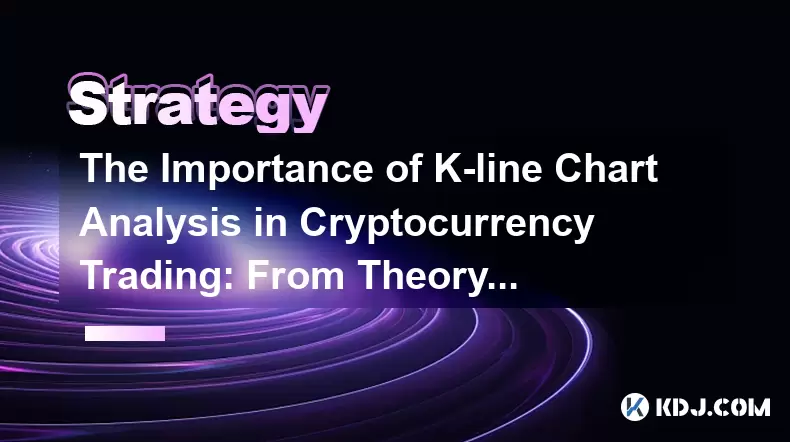
The Importance of K-line Chart Analysis in Cryptocurrency Trading: From Theory to Practical Cases
Jun 11,2025 at 04:56pm
Understanding the Basics of K-line ChartsK-line charts, also known as candlestick charts, are a visual representation of price movements over specific time intervals. Each K-line encapsulates four critical data points: the opening price, closing price, highest price, and lowest price within a given timeframe. These charts originated in Japan during the ...
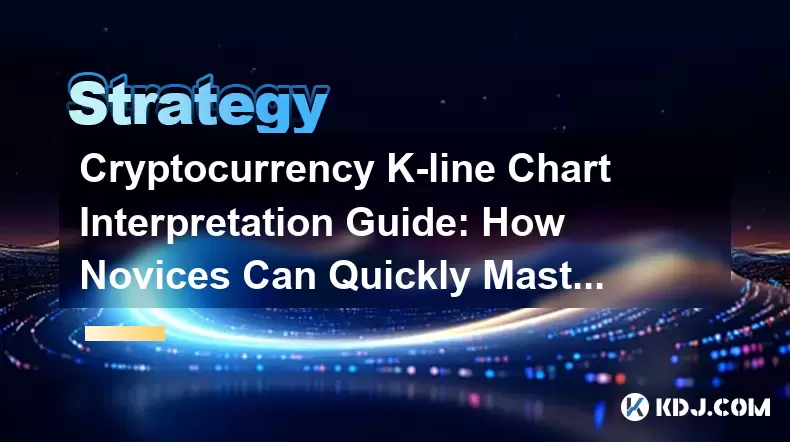
Cryptocurrency K-line Chart Interpretation Guide: How Novices Can Quickly Master the Basics of Technical Analysis
Jun 10,2025 at 08:56pm
Understanding the Basics of K-line ChartsK-line charts, also known as candlestick charts, are one of the most widely used tools in cryptocurrency trading for analyzing price movements. Each K-line represents a specific time period and shows the opening, closing, high, and low prices during that interval. For novices, grasping how to read these elements ...
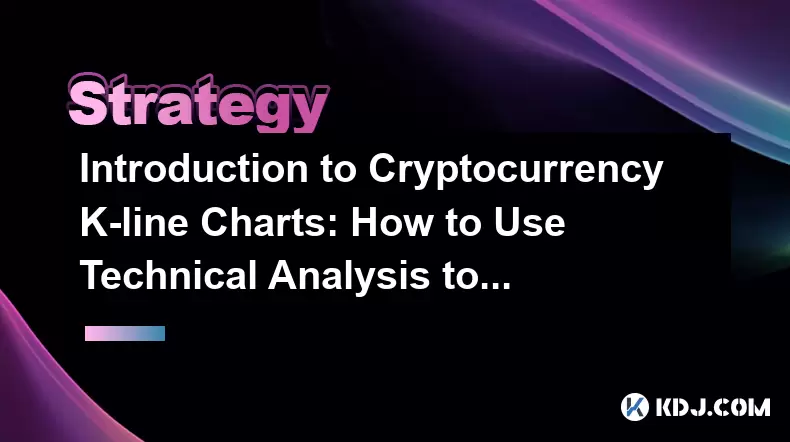
Introduction to Cryptocurrency K-line Charts: How to Use Technical Analysis to Optimize Trading Decisions
Jun 12,2025 at 03:56pm
Understanding the Basics of K-line ChartsK-line charts, also known as candlestick charts, are one of the most essential tools used in cryptocurrency trading. Originating from Japan, these charts visually represent price movements over specific time intervals. Each candlestick displays four key pieces of information: the opening price, closing price, hig...
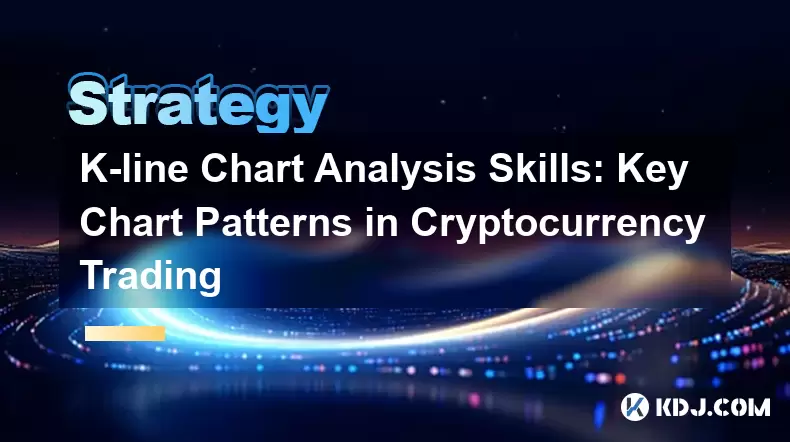
K-line Chart Analysis Skills: Key Chart Patterns in Cryptocurrency Trading
Jun 13,2025 at 10:21am
Understanding the Basics of K-line Charts in Cryptocurrency TradingK-line charts, also known as candlestick charts, are essential tools for analyzing price movements in cryptocurrency markets. Each candlestick represents a specific time frame and provides information about the open, high, low, and close (OHLC) prices during that period. In crypto tradin...
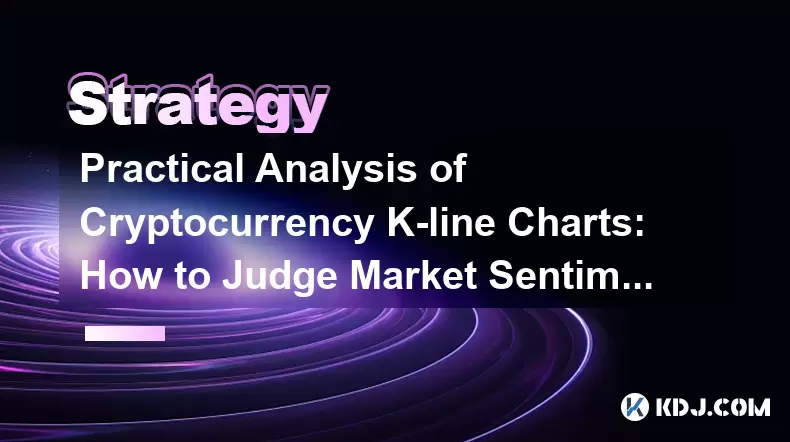
Practical Analysis of Cryptocurrency K-line Charts: How to Judge Market Sentiment through Charts
Jun 10,2025 at 09:42pm
Understanding the Basics of Cryptocurrency K-line ChartsCryptocurrency K-line charts, also known as candlestick charts, are essential tools for analyzing price movements in the crypto market. Each candlestick represents a specific time frame, such as 1 minute, 5 minutes, or even daily intervals. The structure of a K-line includes four key data points: o...

Cryptocurrency K-line chart technical analysis manual: Learn these methods to increase your chances of making a profit
Jun 11,2025 at 11:21pm
Understanding the Basics of K-line ChartsK-line charts, also known as candlestick charts, are one of the most widely used tools in cryptocurrency trading. Each K-line represents a specific time period and provides information about the open, high, low, and close prices during that interval. The body of the candle shows the relationship between the openi...

The Importance of K-line Chart Analysis in Cryptocurrency Trading: From Theory to Practical Cases
Jun 11,2025 at 04:56pm
Understanding the Basics of K-line ChartsK-line charts, also known as candlestick charts, are a visual representation of price movements over specific time intervals. Each K-line encapsulates four critical data points: the opening price, closing price, highest price, and lowest price within a given timeframe. These charts originated in Japan during the ...

Cryptocurrency K-line Chart Interpretation Guide: How Novices Can Quickly Master the Basics of Technical Analysis
Jun 10,2025 at 08:56pm
Understanding the Basics of K-line ChartsK-line charts, also known as candlestick charts, are one of the most widely used tools in cryptocurrency trading for analyzing price movements. Each K-line represents a specific time period and shows the opening, closing, high, and low prices during that interval. For novices, grasping how to read these elements ...

Introduction to Cryptocurrency K-line Charts: How to Use Technical Analysis to Optimize Trading Decisions
Jun 12,2025 at 03:56pm
Understanding the Basics of K-line ChartsK-line charts, also known as candlestick charts, are one of the most essential tools used in cryptocurrency trading. Originating from Japan, these charts visually represent price movements over specific time intervals. Each candlestick displays four key pieces of information: the opening price, closing price, hig...

K-line Chart Analysis Skills: Key Chart Patterns in Cryptocurrency Trading
Jun 13,2025 at 10:21am
Understanding the Basics of K-line Charts in Cryptocurrency TradingK-line charts, also known as candlestick charts, are essential tools for analyzing price movements in cryptocurrency markets. Each candlestick represents a specific time frame and provides information about the open, high, low, and close (OHLC) prices during that period. In crypto tradin...

Practical Analysis of Cryptocurrency K-line Charts: How to Judge Market Sentiment through Charts
Jun 10,2025 at 09:42pm
Understanding the Basics of Cryptocurrency K-line ChartsCryptocurrency K-line charts, also known as candlestick charts, are essential tools for analyzing price movements in the crypto market. Each candlestick represents a specific time frame, such as 1 minute, 5 minutes, or even daily intervals. The structure of a K-line includes four key data points: o...
See all articles

























































































